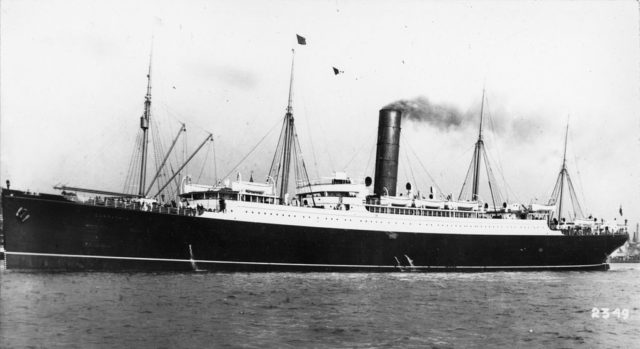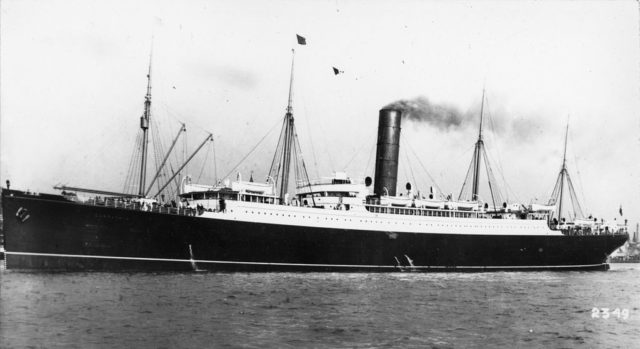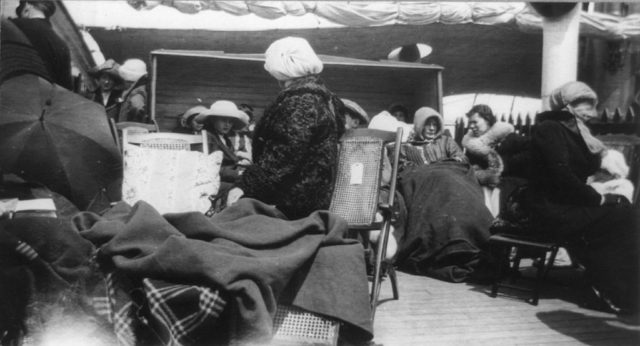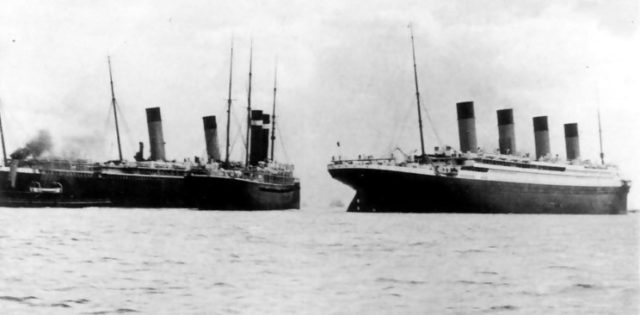A wooden lifeboat was found drifting 200 miles from the site of the sinking of the Titanic. On board were the remains of first class passenger Thomson Beattie and two firemen from the ship’s engine room. They were found by the RMS Oceanic a month after the Titanic was lost at sea.
The RMS Titanic was dubbed the “unsinkable ship” when it was launched. It was the largest ship afloat at the time. It had everything its wealthy passengers could want, except enough lifeboats. On April 14, only four days into her crossing to New York, she hit an iceberg and sank early the next morning. Two hours later the RMS Carpathia arrived, answering flares and distress calls, to rescue about 700 people from the freezing water.

Life Raft Collapsible A is thought to have been the last lifeboat to launch off of the Titanic. The crew had tried to lower it to the sea, but the deck became partially submerged so the crew gave up and the life raft drifted off the ship. It is thought that between 12 to 20 people managed to haul themselves onto the boat. However, as they died or fell ill, they were lowered into the sea to lighten the boat, which was unstable. Mr. Beattie and Mr. Lindell are two of the people known to have gotten on board; sadly, Mrs. Lindell was unable to reach the raft with her husband and drowned. Collapsible A drifted away unnoticed in the early hours of the morning. Mr. Lindell later died, and all that remained of him in the raft when it was found was his wife’s wedding ring. It is thought after he died he was lowered into the sea. Neither Mr. nor Mrs. Lindell’s bodies were ever recovered.
Edward and Gerda Lindell were on their way from Sweden to the U.S. to relocate. Only a week before the Titanic sailed they had received their immigration papers and boarded the Titanic as third class passengers. As passengers were trying to leave the sinking ship, the couple had climbed up the sloping deck with two fellow Swedes; when the slope became too steep, they all slid down and ended up near Collapsible Lifeboat A. Mr. Lindell and August Wennerstrom managed to climb on board, but Mrs. Lindell was unable to be pulled onto the boat.

The grieving husband died clutching his wife’s wedding band. The ring was discovered at the bottom of the life-raft by the crew of the RMS Oceanic and was returned to the White Star Line, who sent it on to Gerda’s father.

First class passenger Thomson Beattie’s body was one of the bodies remaining in the life raft when it was found. He hadn’t originally planned to sail on the Titanic but took the place of someone who had fallen ill.
Before he set sail on the ill-fated Titanic, he wrote to his mother how he was coming home on a new and unsinkable boat. Her distress must have been immense to know he was on the Titanic when word of the disaster reached her in Canada. He died of exposure in the freezing cold air; with wet clothing, it wouldn’t have taken long.

Photographs and a handwritten note combine to detail the gruesome find by the crew of the RMS Oceanic. The life raft looks like debris as it floats on the nearly calm ocean and closer photographs show the raft had partially collapsed and had water on its decks. The bodies were badly decomposed when they were found, and the crew of the RMS Oceanic could only carefully wrap the remains in canvas and give them a dignified burial at sea, Mail Online reported.
Photographs of the lifeboat, as well as a handwritten note, are to be auctioned. It is not known who wrote the description of the recovery. The photographs and note have been held by a private collector for twenty years and are now being auctioned off in Wiltshire.
